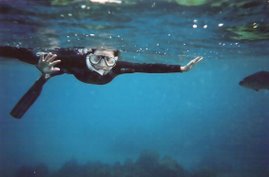
[above: dude carrying a load of sponge-bed-square-pants mattresses for one of the many motels for migrant miners along the main road in Kahama]
Kahama is a dusty dry dude town on the highway to
The streets of Kahama consist of piles of red dirt and dust, dried garbage, and tons of motorcycles, bikes and transport trucks. There are huge numbers of young men hanging out at all times of the day, drinking and cat-calling to the very few women around.
Today, on my way walking to and from the hospital, I received the following greetings, all from men, of course:
Ssssss, SSSSssss. (~20 times)
Mchina, mchina! (~10 times)
Wao, mzungu! (~10 times)
Hee haw! (~5 times)
Hee haw! accompanied by a few sloppy attempts at a martial arts kick (1 time)
I have no idea how “Hee haw” became widely used as a way to name-call Asian-looking people. As far as I know, nothing in the Chinese language sounds like a donkey braying.
It’s not exactly a hospitable place for a young-looking Asian female (i.e. me).
My M.O. is generally to keep walking and ignore the obviously disrespectful attempts to get my attention. Except the faux-Chinese attempts. Then I say back in loud Kiswahili, Si Kichina, “That’s not Chinese.”
It was also difficult to ignore the young buck who revved up his motorcycle when he saw me coming and rode wheelies around me and cornered me every time I tried to escape. He was probably trying to show off and give me a ride, to which I replied “Nina tembea,
This is mostly irritating and probably harmless. I pay for my northern hemisphere lighter-skinned privilege by being treated as a stereotype on the street. Oh well – a minor annoyance. Not pleasant, but not deadly.
Where it becomes a problem for me is when it gets in the way of work. Which it does. On this particular visit to Kahama, it took the clinic-in-charge, Dr. Malulu (who is actually an assistant medical officer – kind of like a physician’s assistant) three days before he addressed me as “Dr. Sophy.” In contrast, he had been addressing Guy as “Dr. Guy” from the very first moment we arrived. The difference between Guy and me is that Guy is a tall white man – and that Guy is a nurse. On previous trips, Guy would actually say, “Please call me just ‘Guy.’ I am a nurse.” And he would call me “Dr. Sophy” to help remind others. But he has stopped doing that. The stereotypes live on.
The end result is that I am left to prove myself alone. A few days of inserting mentorship on complex medical management and demonstrating some mastery of antiretrovirals and diagnostic procedures – and then sometimes, just sometimes, they start believing that I am a doctor. It’s more than a minor annoyance because it means that there are often a few wasted days before people become open to what I can teach and contribute to their work. Since we are given only 4-5 days at each site, this wasted time becomes significant. Such stereotypes and prejudices are a major barrier to efficiency and learning.
But they are reality – the stereotypes and prejudices are constantly present. When I am here, I have to learn to deal with them. The question is whether I want to continue to deal with them in this way. My northern hemisphere lighter-skin privilege gives me a choice on whether or not I want to continue working in rural Tanzania doing these one-week long mentoring sessions and trainings.
I don’t.
After four months of doing this, I have decided that this way of providing mentorship in HIV care and treatment is inefficient and ineffective – for me. I can only speak for my experience and assessment.
My best experiences in global HIV work have been from rooting myself in one specific community, getting to know the people, and building working and mentoring relationships with them. You can ask Flo and Rosie at FACES in
That’s what I’ve decided to do next.
As for the present, I have one more case discussion tomorrow morning at Kahama district hospital on a patient who developed hepatotoxicity (liver failure) on TB therapy and HIV antiretrovirals and another patient who came in with mitral valve disease leading to atrial fibrillation and heart failure, probably due to rheumatic heart disease – from streptococcal bacterial infection, a common cause of heart failure among young adults here.
Then – kwaheri Kahama!

No comments:
Post a Comment